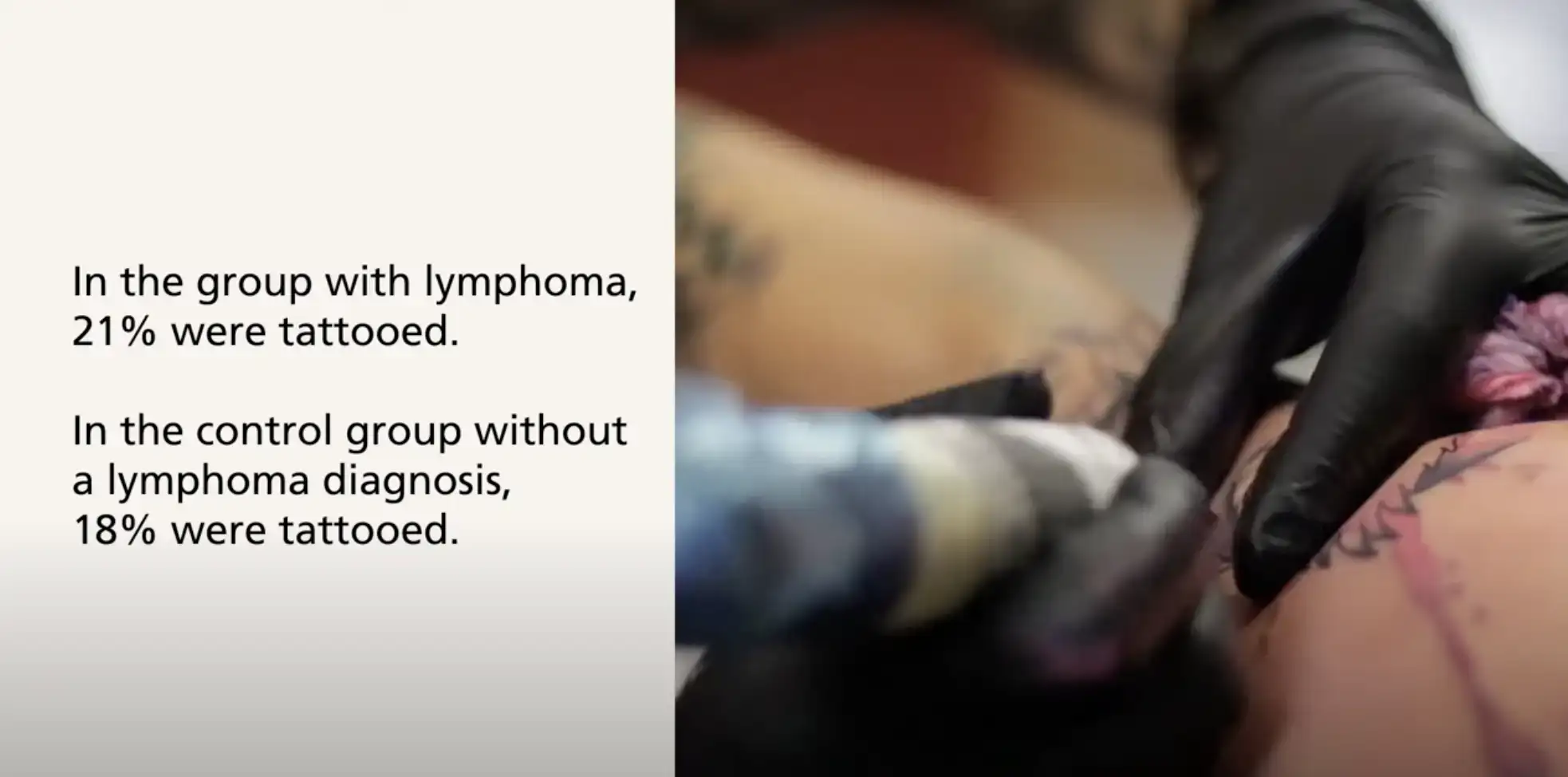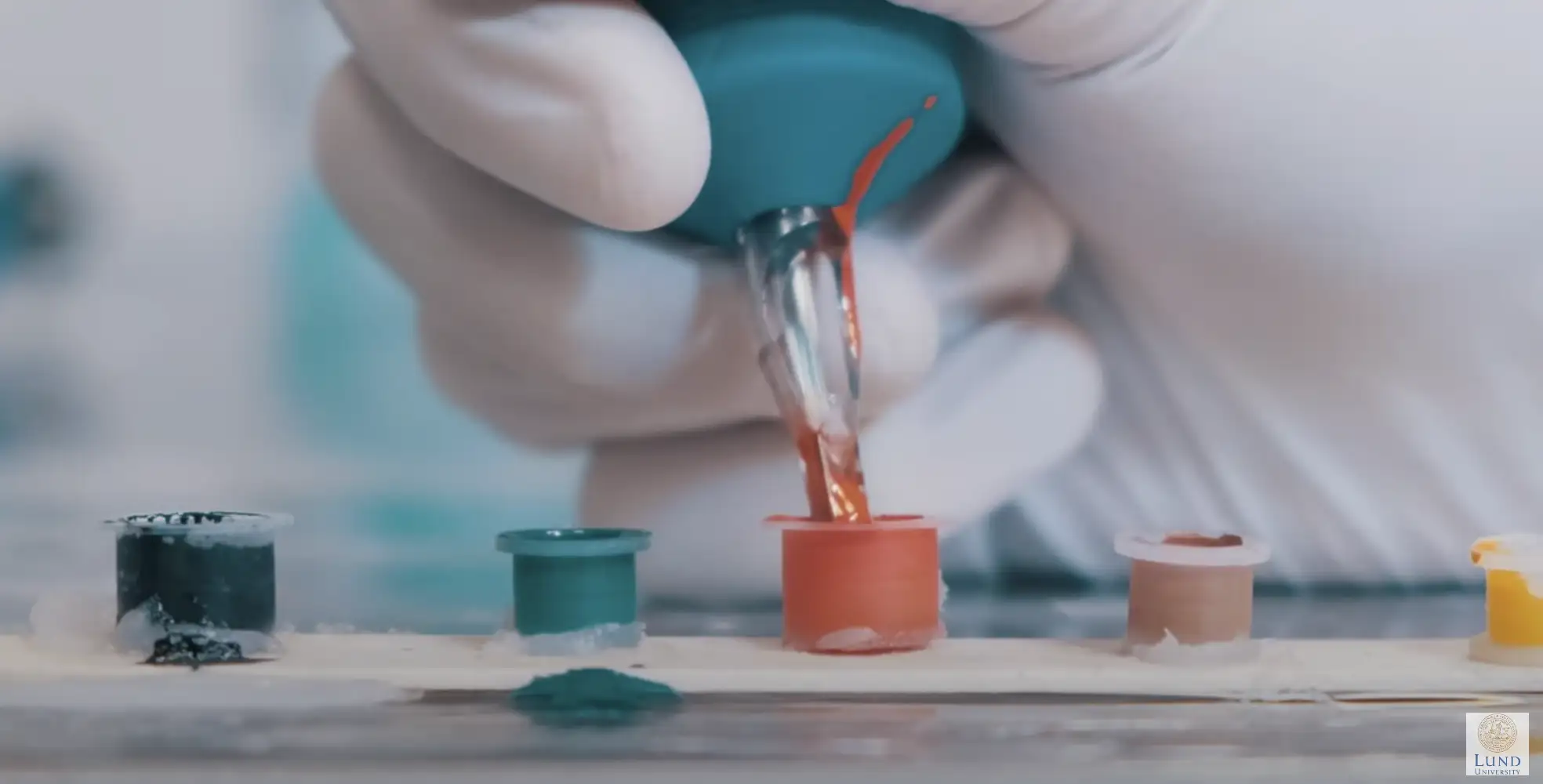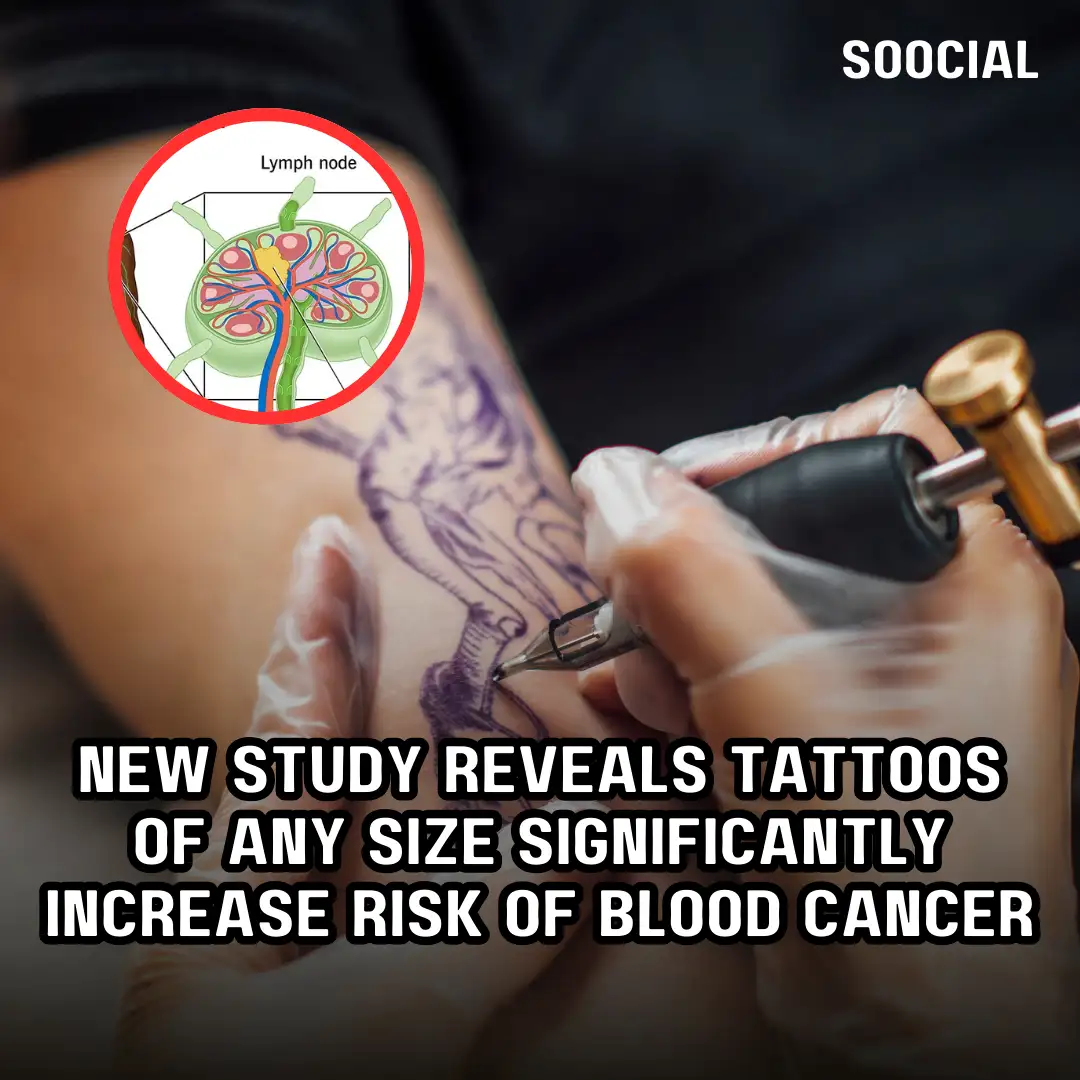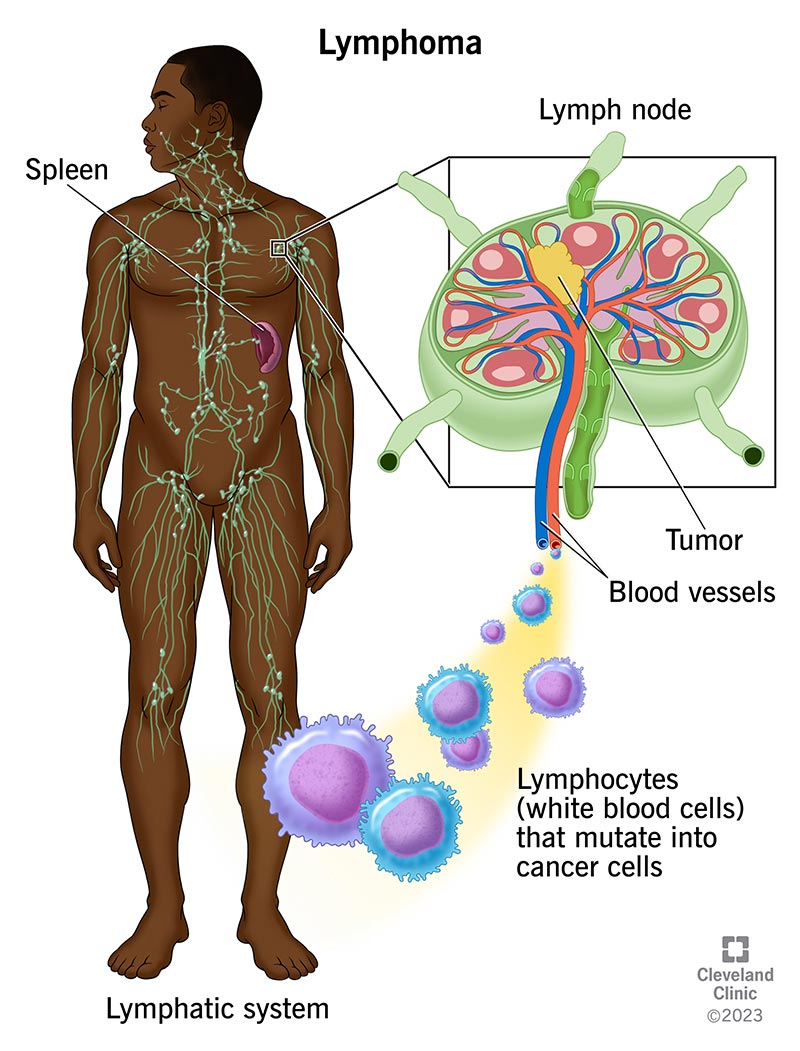Tattoos have become increasingly popular over the years, but a new study from Sweden’s Lund University suggests that there might be more to consider than just aesthetics.
The study, which looked into the potential health risks associated with tattoos, has sparked a debate among experts.
Let’s delve into the findings, the reactions, and what it means for tattoo enthusiasts.
Understanding Lymphoma
Lymphoma is a type of blood cancer that affects the lymphatic system, which is part of the body’s immune system.
The lymphatic system helps fight off infections and includes a network of lymph nodes and vessels.
According to the NHS, more than 13,000 people are diagnosed with lymphoma each year in the UK.
This cancer spreads from the white blood cells into the network of organs that help your body fight off infection.
While lymphoma is considered an “uncommon” cancer, its impact on the immune system makes it a serious condition that requires significant medical attention.
There are various types of lymphoma, including Hodgkin lymphoma and non-Hodgkin lymphoma, each with different treatment approaches and prognosis.
Understanding these differences is crucial for recognizing the potential risks highlighted in the study.
The Study Details
Study Objectives

The Lund University study aimed to investigate the long-term health effects of tattoos, focusing specifically on their potential link to lymphoma.
Despite the widespread popularity of tattoos, there has been little research on their long-term health implications.
This study sought to fill that gap by exploring the potential risks involved.
With a sample size of 11,905 participants, the researchers aimed to provide a comprehensive analysis of how tattoos might influence health outcomes, particularly concerning blood cancer.
The study included people aged between 20 and 60 years old, to capture a broad spectrum of tattooed individuals.
Researchers identified individuals diagnosed with lymphoma through population registers and matched them with a control group of the same age and gender who did not have cancer.
Participants were asked about their lifestyle factors and whether they had any tattoos, providing a robust dataset for analysis.
Methodology

The study’s methodology was thorough, involving nearly 12,000 people in Sweden.
Researchers identified everyone diagnosed with malignant lymphoma between 2007 and 2017 and matched them with a group of the same age and gender mix who did not have cancer.
This approach ensured a well-balanced comparison between the groups.
Participants completed questionnaires that gathered information on various lifestyle factors known to influence cancer risk, such as smoking and age.
This data helped isolate the specific impact of tattoos on lymphoma risk from other potential confounding variables.
The extensive dataset allowed researchers to conduct a detailed analysis, adjusting for factors like educational attainment, income, smoking, and marital status.
This meticulous approach aimed to minimize the impact of socioeconomic and lifestyle factors on the study’s findings.
Key Findings
Statistical Analysis
Out of the 11,905 people in the study, 2,938 had lymphoma, and 21% of them were tattooed (compared to 18% in the control group).
This difference suggested a potential link between tattoos and an increased risk of lymphoma.
Specifically, the study found that tattooed individuals had a 21% higher risk of developing lymphoma.
Interestingly, the size of the tattoo did not correlate with an increased risk of lymphoma.
Whether someone had a small or large tattoo, the risk remained the same, challenging initial assumptions that larger tattoos might pose a greater health risk.
This finding suggests that even minimal exposure to tattoo ink could potentially influence cancer risk, pointing to a more complex interaction between tattoo ink and the body’s immune response than previously thought.
Ink and Immune System Interaction
One of the critical aspects of the study was understanding how the body reacts to tattoo ink.
When ink is injected into the skin, the body perceives it as a foreign substance, prompting an immune response.
A significant portion of the ink is transported away from the skin to the lymph nodes, where it is stored.
“We already know that when the tattoo ink is injected into the skin, the body interprets this as something foreign that should not be there and the immune system is activated,” said researcher Christel Nielsen.

This ongoing immune response might explain the increased lymphoma risk observed in the study.
Furthermore, the study did not find evidence that the risk increased with the size of the tattoo, leading researchers to speculate that a tattoo, regardless of its size, triggers a low-grade inflammation in the body that could potentially lead to cancer.
Expert Opinions and Skepticism
Contrasting Views
While the study presents compelling data, not all experts agree with its conclusions.
Dr. Timothy Rebbeck, an epidemiologist at Dana-Farber Cancer Institute, criticized the study’s conclusions, stating, “The conclusion is really overstated.” He argued that the primary risk factors for lymphomas are not found in tattooing.
Dr. Catherine Diefenbach, director of the Clinical Lymphoma Program at NYU Langone Health, also expressed skepticism.
“What doesn’t make sense to me is why there’s no correlation with the size of the tattoo,” she said.
She noted that if there were an immune or toxic response, larger tattoos should theoretically pose a greater risk.
These expert opinions highlight the need for caution when interpreting the study’s findings.
Both Rebbeck and Diefenbach emphasized the importance of further research to confirm or refute the observed associations.
Need for Further Research
The Lund University study is an early investigation into the potential link between tattoos and lymphoma, and its findings are far from conclusive.
The study authors themselves acknowledged that more research is needed to flesh out their conclusions and to understand the underlying mechanisms at play.
Nielsen and her team plan to continue their research, exploring whether tattoos are associated with other types of cancer or inflammatory diseases such as arthritis, lupus, high blood pressure, and heart disease.
This ongoing research aims to provide a more comprehensive understanding of the long-term health effects of tattoos.
These future studies are essential for clarifying the potential risks and ensuring that any public health recommendations are based on robust and comprehensive data.
Until then, the debate on the health risks of tattoos remains open.
Potential Explanations for Increased Risk
Chemical Content in Tattoo Ink

Tattoo ink often contains chemicals known to be carcinogenic in other contexts, such as metals and polycyclic aromatic hydrocarbons.
These substances are a cause for concern because they can travel through the body and be stored in the lymph nodes, where they might influence the risk of developing lymphoma.
Research has shown that the body’s immune system attempts to remove ink particles, transporting them away from the skin to the lymph nodes.
This process could potentially create a long-term reservoir of carcinogenic substances within the immune system.
“Tattoo ink often contains chemicals that are known to cause cancer in other contexts,” said Nielsen.
Understanding the impact of these chemicals on cancer risk was one of the key motivations behind the Lund University study.
Lifestyle Factors
The study’s authors took care to adjust for various lifestyle factors known to influence cancer risk, such as smoking and socioeconomic status.
These adjustments were necessary to isolate the specific impact of tattoos on lymphoma risk from other confounding variables.
However, experts like Dr. Wael Harb noted that lifestyle factors associated with individuals who get tattoos, such as smoking and substance use, could also contribute to the increased risk.
“The lifestyle factors associated with individuals who get tattoos (e.g., smoking, substance use) could also contribute to the increased risk,” Harb said.
This highlights the complexity of studying the health impacts of tattoos, as it is challenging to disentangle the effects of the tattoos themselves from the lifestyle choices of the individuals who have them.
Broader Health Implications
Infections and Other Health Risks

Beyond cancer risk, tattoos can pose other health risks, particularly if proper sterilization practices are not followed.
One significant risk is the transmission of infections, such as hepatitis C, which can be passed on through non-sterile tattoo needles.
Hepatitis C is particularly concerning because it has been linked to an increased risk of non-Hodgkin lymphoma.
While Swedish tattooists are generally well-educated in safety and hygiene, the risk of infection still exists, especially in less regulated environments.
Nielsen pointed out that the study did not find infection to be a likely cause of the increased cancer risk observed.
However, the potential for infections underscores the importance of choosing reputable tattoo artists who adhere to strict hygiene standards.
Regulatory and Safety Considerations

The FDA has issued draft guidance to tattoo ink manufacturers and distributors to help them recognize and prevent contamination.
This move was prompted by reports of contaminated inks and subsequent recalls, highlighting the need for better regulation in the tattoo industry.
While the FDA does not regulate tattoo practices or the inks used, it logs and investigates complaints against the industry.
This regulatory oversight is crucial for ensuring the safety of tattoo ink and reducing potential health risks associated with contaminated products.
Ensuring that tattoo artists use sterile equipment and safe inks is essential for minimizing health risks.
Consumers should also be aware of these safety considerations and choose their tattoo artists accordingly.
Public Health Perspective
Awareness and Precautions
Given the potential health risks highlighted by the Lund University study, it is crucial for the public to be aware of these findings.
Tattoos may have adverse health effects, and individuals should be informed about the potential risks before getting inked.
Nielsen emphasized the importance of public awareness, stating, “Tattooed individuals should be aware that tattoos might have adverse health effects, and that you should seek medical care if you experience any symptoms that you think may be tattoo-related.”
Being informed and taking necessary precautions can help mitigate these risks.
Individuals with tattoos should monitor their health and consult healthcare providers if they notice any concerning symptoms.
Expert Recommendations
Experts recommend further research to clarify the findings of the Lund University study.
Dr. Wael Harb advised that more studies are needed to understand better the relationship between tattoos and cancer risk, as well as the role of lifestyle factors in these associations.
Rachel Orritt from Cancer Research UK echoed this sentiment, stating, “There isn’t enough evidence to say that tattoos increase people’s cancer risk, and more research is needed.”
She emphasized that other reasons could explain the higher risk observed among tattooed individuals.
For those concerned about cancer risk, proven steps to reduce it include not smoking, eating a healthy diet, and cutting down on alcohol.
These lifestyle changes can significantly impact overall health and reduce cancer risk.
Conclusion
The Lund University study has opened a new chapter in understanding the long-term health effects of tattoos.
While the findings suggest a potential link between tattoos and an increased risk of lymphoma, they are far from conclusive and require further investigation.
As tattoos continue to gain popularity, it is essential for both the public and health professionals to stay informed about potential risks.
Future research will hopefully provide clearer answers and help guide safer tattoo practices.
In the meantime, individuals considering getting a tattoo should be aware of the potential risks and take necessary precautions.
Choosing reputable tattoo artists and monitoring one’s health can go a long way in ensuring a safe and enjoyable tattooing experience.


